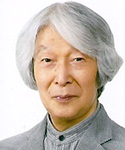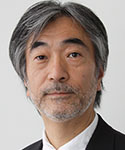The Age of Longevity and Sustainability
- Light and Shadows, Concept and Marketing Strategies

Masaaki Shiraishi
President, Japan Productive Ageing Research Center: Japan
The world population clock has passed the 70.66 billion mark and keeps ticking away at a pace of 200,000 people a day. The population of age 80 and over is also rising 4 percent annually, so aging today can only be discussed from a global viewpoint.
First, we will introduce trends in universal design in light of various initiatives undertaken by the United Nations and various organizations in western countries. We will then consider the "light and shadows" where aging has a particular impact on people and corporations and on communities and society. Although it is only natural that the contribution of design will be a key factor in measures for unlocking the rich potential and "shadows" of humanity, it is important to note that as early as 270 years ago the sustainability of individuals was already seen as a potential threat to the sustainability of society.
For corporate entities, a long-lived society can be viewed as a new, unknown continent. Although there are many areas where development will proceed as an extension of the present, the challenge that lies ahead in "personal mobility" is not widely understood. Because human beings die "feet first," we may very well discover an enormous, unexplored market.
An important aspect of aging is its "diversity." This makes the discovery and development of needs of an aging society complex. Because of this diversity, it is our belief that we must broaden the concept of universal design by considering those latent human traits deep in the human psyche, that is, a fourth-dimensional aspect of universal design. We would also like to present examples of universal design where we are steadily building on our achievements using new concepts and a global strategy as our key strengths.



